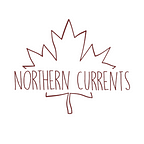Racist blood quantum laws still define First Nations in Canada
Originally published on Northern Currents
Since signed into law in 1876, the Indian Act has used Blood Quantum laws to define who is legally a First Nations person in Canada. These laws were born out of racist, paternalistic ideas of controlling and colonizing First Nations People by the Canadian government. They were an attempt at defining those who have lived on this land for thousands of years in a way that suits colonial interests.
The Indian Act is a legislative tool used to subjugate and control one race of people. Blood Quantum laws are one part of this project.
Blood quantum laws define people based on a percentage of ancestry, that is, how many descendants a person has that are also first nations. If a person has enough descendants, they are considered to have ‘status’ in Canada and therefore qualify as ‘Status Indians’ who are subject to benefits and restrictions of the Indian Act.
Historically, these laws have been complex, exclusive, and discriminatory. They do not apply to Inuit, Metis, and ‘Non-status Indians’ and there are several ways in which one could lose their status. If a woman were to marry a non-status person, she would lose her status. But if a man were to marry a non-status person, that person would gain status. Matrilineality, kinship through the female line rather than the male line, was present in some indigenous societies for thousands of years. The Indian Act and Blood Quantum laws ignored and attempted to eliminate this aspect of some cultures.
Like what you’re reading? Join Northern Currents on Facebook, Twitter, and Instagram!
There were many other roadblocks built into these laws. Going to university and earning a degree was off-limits and would result in the removal of one's status. Living off-reserve could also result in a loss of status. If one had status they were not allowed to vote. Live outside the country for more than five years? You guessed it, the status would be lost. Passing on status to one's children could be complicated or impossible if one parent did not have status.
In 1985 bill C-31 was passed and attempted to fix these some of these discriminatory laws. The fact is that the main problem of defining ‘status’ based on blood quantum remained; This colonial way of thinking denies the right of First Nations to define themselves.
First Nations have lived on the land we call Canada for thousands of years before this land was “discovered.” Over this time they already ran into the problem of who is and isn’t a member of their nation and had developed their own systems. These systems are what should be used to determine who is First Nations, rather than blood quantum laws. Letting nations themselves decide is a necessary condition of self-determination.
There is no one definition of what makes a person indigenous and there are many different factors to consider. This is because there is such a wide variety of cultures, customs, politics, and beliefs among nations with thousands of years of history. To simply lump this diverse group of people into one group is wildly unhelpful. Nonetheless, the best way to determine if one is indigenous is provided by United Nations:
- Self-identification as an indigenous person at the individual level and
- Acceptance by the community as their member
Another key point of bill C-31 was to separate legal status from band membership. This did allow bands to manage their own membership. This is a step in the right direction although, there is one glaring problem: even though bands can determine their own membership, Aboriginal Affairs and Northern Development provide funding to bands based on the number of “Status Indians,” not band members.
So, we can see here that one could be a member of a First Nations band, but also not have status. This is what the Canadian government needs to fix. Blood Quantum laws need to be removed.
According to a discussion paper by the Assembly of First Nations, this can have negative financial effects. Programs like community infrastructure and housing would not receive proper funding:
As a result, the following situation takes place: should a Band that doesn’t have its own-source revenues introduce a membership code where its criteria takes a less strict form than those depicted in the Indian Act, then the non-status members of such Band will saddle it with additional financial burden.
Many bands that have their own membership codes do use the hereditary connection as one path to membership. At first glance, it may seem odd to advocate against blood quantum laws while many bands choose to use similar approaches, but this misses the point entirely. The point here is that bands should be able to determine their own membership laws, not have a colonial state prescribe them.
Originally published at https://northerncurrents.ca on August 13, 2020.
